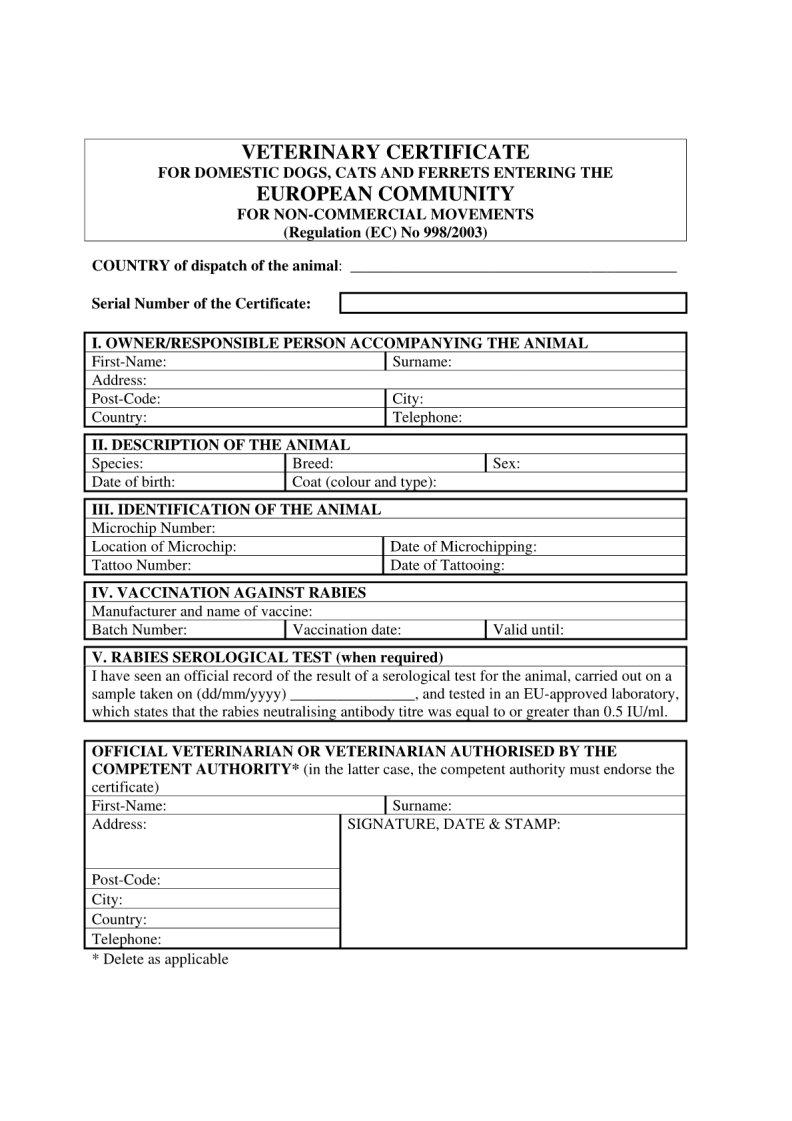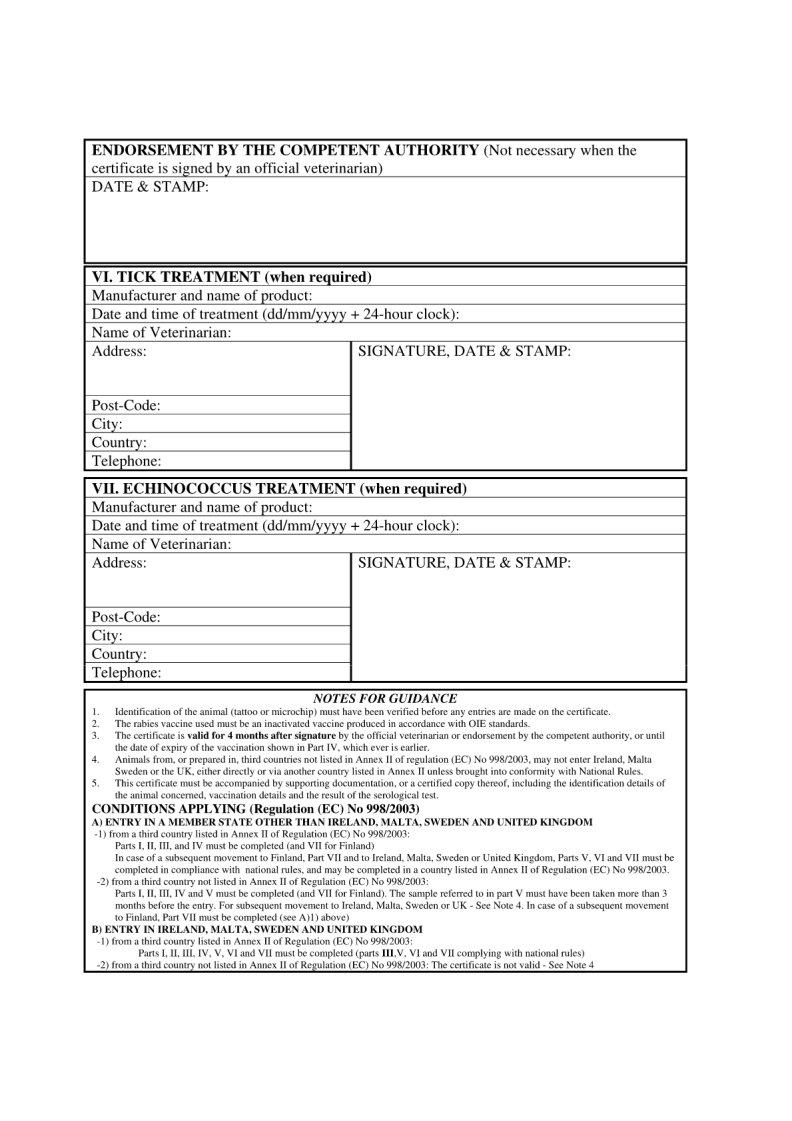Traveling with pets to the European Community requires meticulous preparation and adherence to regulatory guidelines, especially when it comes to ensuring the health and safety of domestic animals like dogs, cats, and ferrets. Central to this process is the Veterinary Certificate, a mandatory document outlined by Regulation (EC) No 998/2003, designed to streamline non-commercial pet movements within the EU. This comprehensive form captures crucial information, starting with the pet owner's details, followed by a detailed description of the animal, including species, sex, date of birth, and identification via microchip or tattoo. It further delves into the animal's health background, highlighting rabies vaccination history, serological test results when necessary, and treatment records for ticks and Echinococcus as needed. Notably, the certificate distinguishes between animals entering from countries listed in Annex II of the regulation and those from unlisted third countries, specifying varying requirements for entry into different EU member states. The certificate's validity, conditional on validation by an official veterinarian or competent authority, and the essential nature of accompanying documentation underscore the rigorous standards set forth to safeguard public and animal health across member states. This form not only facilitates the safe passage of pets but also serves as a vital checkpoint against the spread of rabies and other diseases, embodying a critical interface between legal mandates and the well-being of the EU’s animal and human residents.
| Question | Answer |
|---|---|
| Form Name | Veterinary Certificate Form |
| Form Length | 2 pages |
| Fillable? | No |
| Fillable fields | 0 |
| Avg. time to fill out | 30 sec |
| Other names | veterinary certificate, SEROLOGICAL, Veterinary, to |

